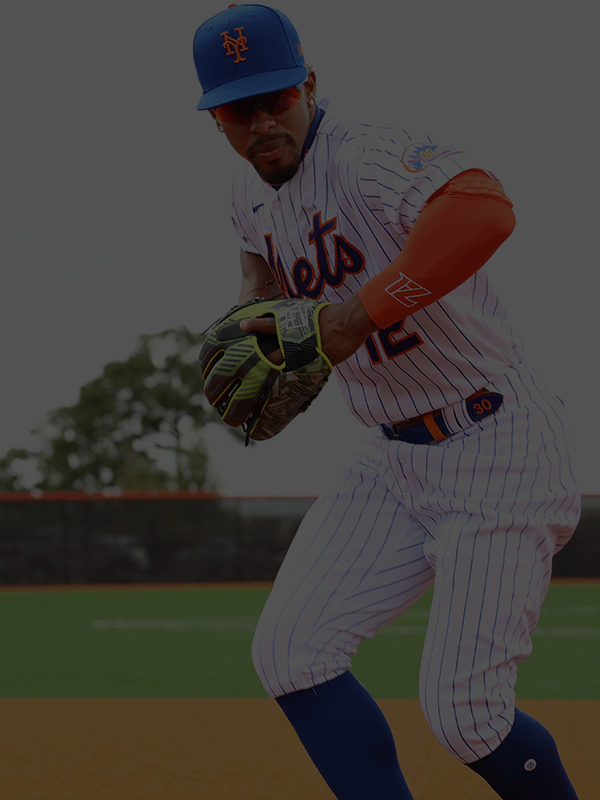Playing the infield requires flawless instincts and well-trained muscle memory – when a ball is hit your way, every action you take can be the difference between a baserunner and an out. Because of this, the preparation you take off the field makes a huge difference between the foul lines.
Given how obsessed as we are with baseball gloves, it’s only natural that we’re dedicated to improving defense at every level. Here are four of our favorite drills for infielders.
1. Short Hops
Creating “your hop” is critical in the infield. If you can’t get a long, high hop, your next best option is usually to attack the short hop. If you can pick a ball immediately after it hits the ground, you reduce the chances of getting “eaten up” by a bad bounce or hard-to-read spin. This drill is intended to help pick that short hop from any angle.
This drill can be done with any glove and is easiest when done with another person (although a concrete wall can do the trick). Starting on your knees, have your partner throw the ball so it bounces just out in front of you. Focus on bringing your glove hand through the ball as you reach out to pick it. The goal is to control your glove as you work it through the path of the ball. For the ball straight at you, work with both hands through the ball.
Once you feel comfortable with the ball coming right at you, repeat that same process with ball to your glove and backhand side. This is a great drill to isolate that aspect of fielding without worrying about your footwork or the throw. This drill can be done with your normal game glove, a pancake or mini trainer, or even bare-handed.
This video shows Ron Washington and Rawlings Gold Glove Award winner Marcus Semien running this drill to perfection!
2. Count the Hops
You can think of this as “Drill 1A.” It’s one of the simplest things to work on, but still very effective in creating your own hop.
Whenever you are taking ground balls of any kind, count the number of hops the ball takes before you field it. As you gather and make your throw, call out the number of hops to your coach or teammates.
This drill helps train your eyes to read spin on the ball, and tracking the ball with your head also helps create a naturally effective fielding posture. Like the short hop drill, using a training glove will boost the value you’re getting from your practice reps.
3. Three Ball or Cone Drill
You’re hardly ever going to field a groundball without also having to make a throw, so seamlessly blending your fielding and throwing motions is key. The Three Ball Drill is focused entirely on footwork to make sure you’re pushing your momentum towards first base as you field the ball.
You will start by setting up three balls or cones in a triangle – two cones closer to home plate and one cone closer to you -- with about 3 to 4 feet between them. Start in your fielding position behind the back cone. As a partner rolls or hits a ball between the two front cones, begin your fielding motion. Your goal should be to work outside the cone to your right side (to practice a ball hit to your left) and then move through the ball with your momentum going toward first base. This can look like a crossover step with your left foot followed by a plant/push-off step with your right to get back into your fielding position centered on that ball or cone to the right side.
You can also use this drill to train backhands – just move around the left cone, planting your right foot as you field the ball to redirect your momentum toward first base.
The goal of this drill is to work on the footwork and the rhythm of playing infield. An infielder never wants to be static or flat footed. This drill trains your muscle memory to always work around and through the ball whenever possible.
4. The Square Drill
This drill can be done with two to three teammates and focuses on the throws you’ll have to make as an infielder. Standing in either a square or triangle, you will be practicing the various feeds that are especially valuable to middle infielders.
Begin by facing the person to your right side, and then move into an underhanded flip going to your left. This simulates a shortstop feeding a second baseman on a double play or a first baseman feeding a pitcher covering first. Make sure you are following the feed and pushing off with your right leg.
(Quick flip tip! Rather than rolling the ball off your fingers, which can create spin that makes the ball difficult for your partner to catch, feel yourself “pushing” the ball from your elbow as you make your flip. This will help reduce spin and create a quicker transfer for your teammate.)
Next, you will face the partner on your left and work on the underhand feed from the second baseman to the shortstop. You again want to push with your legs and follow your feed, this time to your right.
The third progression is again facing the person to your left but now you are simulating the throw from second to short on a double play. This can be done in a couple of different ways but usually involves a pivot to a knee or a slight drop step with your right foot with a lower arm slot on your throw.
The fourth and final progression replicates a shortstop throwing to second for a double play. Facing the player to your right, you “field” the ground ball and drop step with your left foot to easily open up your body for the throw to the person on your left.
This drill works the most common feeds and arm slots you’ll be using in a game. It also allows you to practice receiving the ball and making a quick transfer to your throwing hand. A training glove can be especially useful in this drill, since it will over-emphasize your hands during transfer.
Going From Training to Game Play
When infield is played well, it’s like watching an artist at work. You can easily see the creativity and discipline at work when you watch someone like Francisco Lindor or Nolan Arenado field a groundball. But what happens in the game is result of hours of practice – and a perfect feel for your glove. Whether you’re shopping for a gamer or a training tool, getting the right leather on your hand is key to getting the most out of your game. Shop for your dream glove now and then hit the field to practice these drills!




